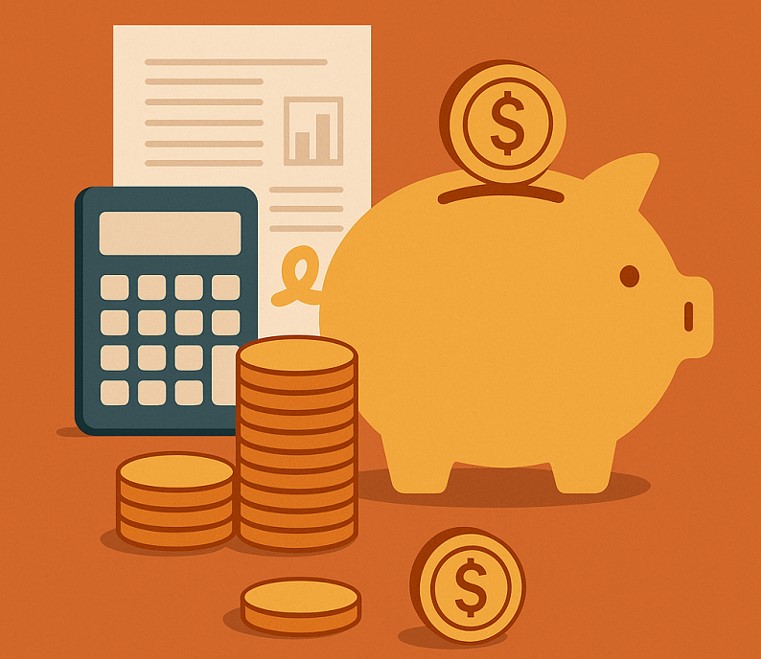Since the dawn of humanity, saving money has always been a matter of high willpower. Although various formulas, methods, and austerity policies have been followed to save money, we can say that it has not been very successful. In addition, when you add unexpected expenses every month, unfortunately, you cannot make stable money savings, right? That’s why I’m here for you, I will teach you how to do a 30-day savings challenge step by step.
Why You Should Try the 30-Day Savings Challenge
For those of you who are caught between the hot money in the account at the end of each month and the endless desire to spend, I’m telling you: it’s the easiest thing in the world to do. Now you can throw yourself into a shopping mall and shop like crazy. And then what? There will never be an end to this kind of impulsive behavior, but your wallet will certainly remain empty.
But I know that very few people can build a consistent savings ecosystem. For this, you need to be consistent and patient. We have listed the steps that will make you develop and gain experience in saving money, leaving impulsive spending aside.
Key Benefits:
- Careful spending: You should know where your money is going.
- Confidence: Small wins build momentum.
- Clarity: Identify financial leaks and emotional triggers.
- Discipline: Reinforce control instead of harsh restrictions.
Most important is the fact that it is low risk to start changing your financial story.
What You Need Before You Start
If you are failing every time you try to save money and you can’t stop it, you should follow these three points. Believe that I will save you from impulsive spending and keep going.
1. Set a Clear Goal
Saving $200 at the end of 30 days or eating a burger out? Targets are like a compass, if you lose your way, your compass will point you in the right direction.
2. Choose a Tracking Method
- Download a printable savings challenge tracker.
- Use a free budgeting app like YNAB or Goodbudget.
- Go old school with a notebook or bullet journal.
3. Create a Visual Reminder
Putting your challenge calendar on your fridge is the most popular method, a good way is to set a reminder on your phone or use sticky notes. Seeing it every day keeps it in your mind.
30-Day Savings Challenge Plan (with Daily Actions)
It’s time to shake it off, get up and get going! Here is a full list of daily actions you can follow. Rebuild your always-spending-oriented mood with the list below.
Week 1: Awareness & Audit
The first week is the hardest for savings. If you don’t give up and get through this first week. The rest will come like a sock.
- Day 1: Track all your spending for the day. Every penny.
- Day 2: List every subscription you’re paying for — cancel at least one.
- Day 3: Bring your own coffee or lunch and calculate the savings.
- Day 4: Review last month’s bank or card statements.
- Day 5: Set a no-spend rule for one tempting category (e.g., clothes).
- Day 6: Compare prices for 3 items you regularly buy.
- Day 7: Reflect: What surprised you most this week?
Week 2: Trim the Fat
In Week 2, we narrow your comfort zone a little more. But it’s worth it, don’t give up, keep fighting.
- Day 8: Limit groceries to a $50 budget — plan meals around it.
- Day 9: Skip a delivery or takeout — cook instead.
- Day 10: Sell one unused item — list it today.
- Day 11: Postpone one non-essential expense.
- Day 12: Start a digital spare change jar (use apps like Acorns).
- Day 13: Use a cashback browser extension when shopping.
- Day 14: Reflect: What was easiest to cut out this week?
Week 3: Build Financial Skills
Not every person is born with financial skills. But it can bring out your talent. Discover your financial skills
- Day 15: Shorten your shower or reduce electricity use.
- Day 16: Call your internet or insurance provider — ask for a lower rate.
- Day 17: Plan 5 home-cooked meals using pantry ingredients.
- Day 18: Find and cancel any hidden fees or autopayments.
- Day 19: Have a zero-cost fun day (library, free museum, walk).
- Day 20: Set a small, SMART savings goal — and put away $10.
- Day 21: Reflect: What habit is becoming natural?
Week 4: Lock It In
There’s very little left to save, you’re in week 4, you can do it.
- Day 22: Open a savings account just for challenge money.
- Day 23: Automate a $5 or $10 weekly transfer.
- Day 24: Write a one-page monthly budget.
- Day 25: Review your fridge — plan meals to reduce waste.
- Day 26: Complete a no-spend day.
- Day 27: Journal your 3 biggest money lessons this month.
- Day 28: Plan a low-cost treat (a hike, a movie night).
- Day 29: Invite a friend to join next month’s challenge.
- Day 30: Reflect: What will you continue long-term?
Mindset Changes that Make Challenge Work
You can follow the 30-day list flawlessly, but real success comes from thinking differently about money. Here are a few mindset shifts that I have found useful:
1. Progress = Excellence
Don’t exhaust yourself to be perfect, just be consistent. Missing a day does not mean you are a failure. It means you are human.
2. Saving is Freedom, Not Punishment
Instead of focusing on what you are giving up, remind yourself of what you are gaining: choice, peace of mind, control.
3. Small Gains Matter
Skipping a $3 coffee may seem insignificant, but doing it 10 times makes $30. Small gains are compound.
4. Temptation is Part of the Process
You will want to spend it. This is normal. When it happens, stop and ask: “Will tomorrow be worth it?”
Common Challenges and How to Overcome Them
I am sure that if you really believe in this 30-Day Savings Challenge you will succeed. Don’t skip the 3 most important points below.
“I forgot to keep track of a few days.”
Pick up where you left off. Don’t start all over again. Just keep going.
“Friends want to go out – I don’t want to say no.”
Suggest low-cost alternatives: coffee instead of dinner, walking instead of drinks.
“I don’t feel like I’m saving enough.”
Remember: mindfulness itself is valuable. Many small changes take time to yield results.
What Happens After 30 Days?
The real change starts from here. For me, it has been a month of observing, adjusting and experimenting:
- I know my spending triggers, don’t you?
- I have a budget skeleton I can expand, don’t you?
- I’ve created a daily awareness about money, haven’t you?
- I’m someone who has saved 100-300 dollars without making big sacrifices, aren’t you?
Where to go from here:
- Repeat the challenge with new goals
- Move from daily tasks to weekly habits
- Use your notes to create a customized savings plan
Advanced Tips for Leveling Up
If the savings challenge above is too light for you, you can take it to the next level below. We have 4 great rules for that:
1. Try a “Cash Only” Week
Leave the cards at home and use envelopes. This will instantly make you more conscious.
2. Combine it with No Spending Month
Choose categories to jump into: eating out, new clothes, digital spending.
3. Combine Challenges
Pair your savings challenge with a decluttering or meal planning challenge to multiply your impact.
4. Create a Visual Savings Goal
Use a savings thermometer, sticky notes or a progress jar to make the goal tangible.
My Final Thoughts for 30 Days of Savings
This 30-day savings challenge is not just about saving money. It’s about control, awareness, and showing yourself that you can change your financial life at any time.
If you are already here writing this article, it means that you have already taken the first step and you are ahead of other people. You have started a long-term investment for the years to come and you will see the impact of this in the long run, if not in the short run.

